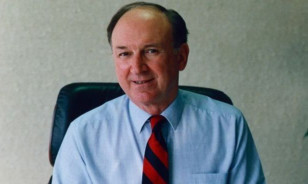‘Save our Scottish mince’ may not be the most intellectual slogan ever coined but it showed Endell Laird’s canny understanding of the mass Scottish readership.
When the EU threatened to ban Scotland’s staple meal of mince and tatties on hygiene grounds, he threw the Daily Record into another successful campaign.
The same understanding led to the Record raising what was believed to be the greatest-ever sum by a newspaper anywhere in the world £4 million for the first Scottish children’s hospice.
When fellow executives queried the amount, he said: “Record readers will give as much as that cause needs.”
Previously, when he was editor of the Sunday Mail, the paper had pledged to raise £300,000 for units in Glasgow for young patients in need of bone marrow transplants.
Double that amount was raised.
Many were surprised that he did not receive recognition in any honours list for his papers’ campaigns for charity and Scottish interests.
It was believed the Robert Maxwell connection he was on the Maxwell board of directors counted against him.
His gut feeling for what his readers wanted was responsible for the Daily Record and Sunday Mail sustaining their domination of the market north of the border.
Under his editorship, the Sunday Mail sold 900,000 copies and the Daily Record three-quarters of a million, with both papers campaigning on issues of social justice and Scottish life, notably including Save Ravenscraig steel mill, Rosyth dockyard, consumer affairs and child abuse.
Born and educated in Forfar, his early years in journalism were spent on the Dundee Courier, Scottish Daily Express and Evening Times.
He was editor of the Sunday Mail from 1971 to 1988 and editor of the Daily Record from 1988 to 1994, with the title of editor-in-chief of both papers, and was chairman of the Scottish Editors Committee from 1986 to 1988 and member of the D-notice committee 1986 to 1994.
When asked what he thought his achievements were, he summed up his career by saying: “Maintaining standards and ethics on popular papers, while closely identifying with a national readership as well as their pride in being associated with charitable causes.”
